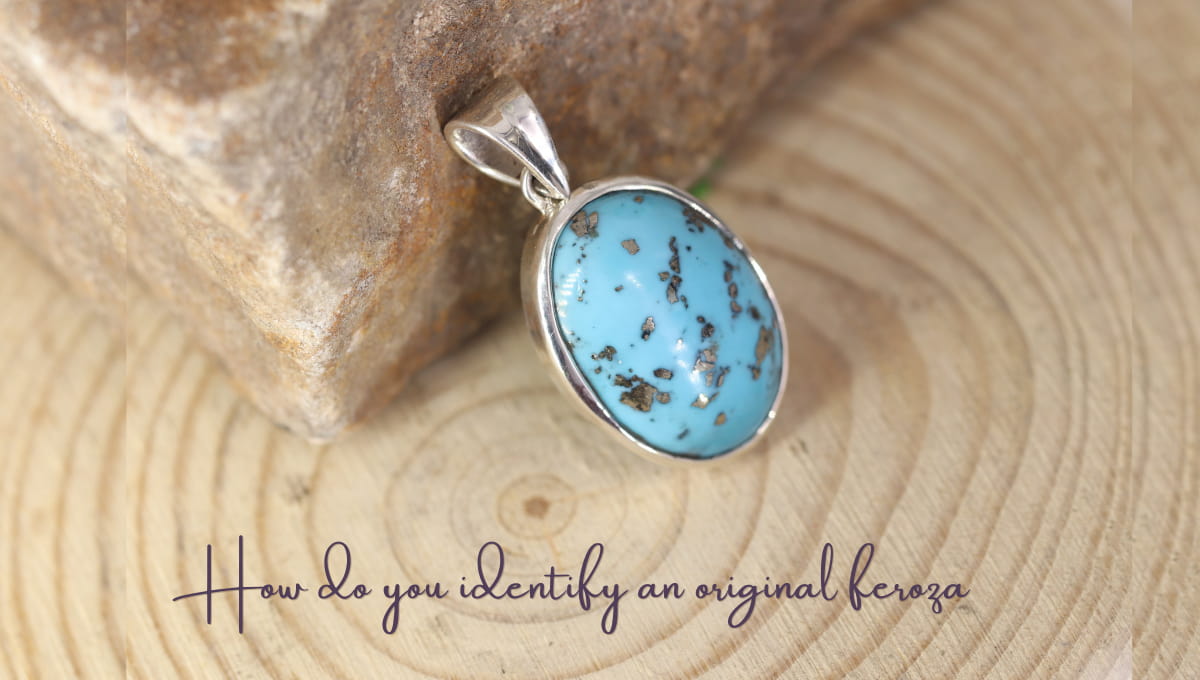Irani Feroza, majorly acknowledged as Irani Turquoise stone, is one of the most pivotal gemstones that transcend allure and elegance by leaps and bounds. Found only in particular regions of Iran, a natural Irani feroza exhibits lush blue hues and brown lines running down the stone, indicating its originality. The darker the blue hues, the more attractive and desirable an Irani Feroza seems.
The demand for original Irani Turquoise is so intense and extensive in the international markets that wholesalers have started selling fake replicas of Irani Feroza to rake in big financial gains swiftly regardless of maintaining ethics and morals. Newbie gem enthusiasts who don’t have a minuscule idea of checking the originality of gemstones often fall into the trap of buying fake or synthetic gemstones. The significant question that revolves here is how to identify original Irani Feroza among heaps of fake gemstones. Well, the answer lies in the comprehensive blog post which encapsulates all the crucial pointers that will help to identify the original Irani Feroza effortlessly and save yourself from getting coaxed by fake gem dealers.
Read Worthy: – Myths About Gemstones
Different Ways to Identify Original Irani Feroza
The Classic Scratch Test
There are a myriad of methods to determine if your Irani Feroza (turquoise) is genuine, such as the Fingernail Test, Acetone Test, and Mohs Hardness Test. However, many of these can be quite destructive to the stone itself and can deteriorate the color as well as texture of the stone. Among all the available options, the scratch test is one of the least damaging as well as the easiest methods to check the originality of Irani Feroza. Turquoise is inherently a soft stone, whereas its common imitation, howlite, is even softer.
By performing a scratch test, you can distinguish between the two: if your stone scratches easily, it is likely howlite; if it resists scratching, it is probably genuine turquoise. It is advisable to conduct this test on a less visible part of the stone, such as the underside, to minimize any potential damage to the appearance.
Don’t Miss: – Which Gemstone to Wear On Which Finger
Check Appearance
Spotting a fake turquoise can be like playing detective on a microscopic scale. While genuine turquoise boasts a natural fingerprint of color variations, fakers try to mimic this with dyes. This can make it tricky, but there are still ways to crack the case.
Imagine a phony turquoise piece. The dye might be a sloppy forger, leaving telltale puddles of color where it seeped into cracks. But if the surface feels smooth, that dye might be a master of disguise, painted directly on to mimic the natural matrix of real turquoise.
The key takeaway? Fakes can be crafty, and genuine stones have their own unique characteristics. While a single glance might not always reveal the truth, a keen eye and a close inspection can help you separate the real turquoise stone from the imposters.
Check Price Tag
Another effective but no so reliable way to identify original Irani Feroza is meticulously checking price tag. Genuine turquoise often comes with a higher price tag, so if a deal seems too good to be true, it probably is. That $10-20 statement necklace of Irani Feroza might just be cleverly painted plastic. However, if authenticity isn’t your priority, that’s perfectly fine. There’s no harm in wearing any jewelry that helps you express your style and personality.
Must Read: –Aquamarine vs Turquoise
Fingernail Test
When it comes to testing the originality of gemstones, examine the stone like a geologist on a treasure hunt. Real turquoise often boasts a beautiful “spider web matrix” – a web of brown or black lines running through the blue color of the stone. This matrix isn’t just for show; it has texture! Run your fingernail gently across the stone. If it catches on those web-like lines, it’s a good sign you have genuine turquoise. Fakes, often made of plastic or resin, tend to be smooth operators. They might paint a convincing web, but it’ll lack the telltale snag your fingernail gets on the natural matrix of real turquoise. So, a catchy snag is a good snag when it comes to spotting the real deal.
Melt Test
Authentic turquoise is resistant to melting, unlike its plastic imitations. To test this, heat a metal sewing needle with a lighter flame. Press the heated needle against a hidden part of the turquoise. If the stone is plastic or resin, the needle will melt it, releasing a burning plastic smell. Genuine turquoise, however, will remain unaffected by the hot needle.
Check Out: – How To Wear Turquoise Stone
